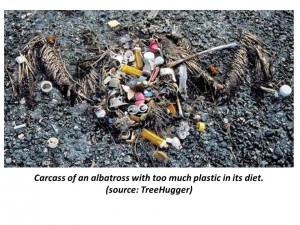Doing your best to tread lightly on the planet? Well, if you’re stil l laundering your clothes, you have room for improvement.
l laundering your clothes, you have room for improvement.
Turns out a single garment can release 1,900 microplastic fibers in a single wash, and fibers like these can end up in the food chain, says a study reported by the BBC. After being eaten, the plastics appear to get into animals’ cells.
“As the human population grows and people use more synthetic textiles, contamination of habitats and animals by microplastic is likely to increase,” says the study in the Journal of Environmental Science and Technology. “Already, microplastic contaminates the shorelines at 18 sites worldwide representing six continents from the poles to the equator, with more material in densely populated areas.”
And you don’t get a pass for wearing natural fibers. As TreeHugger observes, “cotton causes other problems because of how much water and pesticides is used to make it grow.”
Information like this makes you wonder how much damage humans are doing beyond CO2 and the obvious chemical pollutants, and exactly how we collectively determine which damaging actions we most need to discourage.
However insidious, microplastic is defined as being less than 1 mm in size, so we’re dealing with a bit of an abstraction. For a more tangible experience of plastic in the ecosystem, see TreeHugger’s Great Pacific Garbage Patch slideshow. Or these photos, which find beauty in the blight.